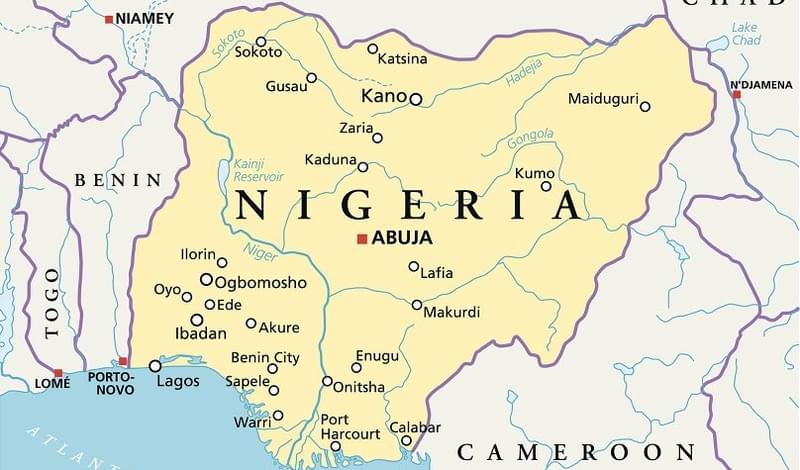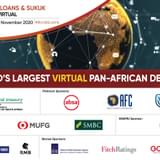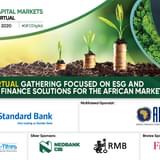This is the consensus view observers project on notable African underperformers – namely Nigeria, Mozambique and Angola. Depreciation of the FX rate on the back of low oil prices has been a common factor underlying their export-driven economies. Others include economic mismanagement and political instability caused by ongoing regional conflicts, with the Boko Haram insurgency in Nigeria impacting oil production and clashes between government forces and RENAMO militants devastating Mozambique. Needless to say, nuances persist.
Nigeria: Oil, FX in Focus
“Nigeria’s case is very different from that of Mozambique – it also has some major issues, but is still far from default,” says Victor Lopes, a Senior Economist for Sub-Saharan Africa at Standard Chartered Bank. “It initially experienced the commodities price drop shock, followed by some policy mistakes and lack of action, while for Mozambique it was purely about total mismanagement on part of government and bad economic transparency. These are also the IMF’s main concerns.”
Nigeria’s economy has been in bad shape since oil plunged in 2014, shrinking 1.7% in 2016, compared to 1.5% average growth across sub-Saharan Africa. Foreign direct investment in the country fell to a mere US$3bn in 2015, from US$9bn in 2011, while a widening deficit and growing debt servicing costs are aggravated by the continued fall of the naira.
Nigeria’s currency took a big hit after the Central Bank unpegged the naira in June, having controlled the FX rate for 15 months prior; as a result, the naira plummeted almost 40% to the US dollar, and most estimates suggest it still hasn’t hit its true value. While the current official was 315.34 per dollar in late January, the currency bureaus were selling at 399 to the dollar, and it traded as high as 495 on the black market, which has precipitated painful dollar shortages.
“If we apply our purchasing power parity model on the current FX rate, we will see that it is not too removed from the real rate,” said Joe Delvaux, a Senior Fund Manager at Duet Asset Management. “But there is just not enough hard currency coming into the system, which is a common problem for such import-dependent economies, once the main revenue source for US dollars is coming under pressure.”
For an export-reliant country like Nigeria, the continuously deflated oil price impacts revenues dramatically. And the other side of the coin is remittances, which crystallise the FX at this current rate, meaning that people inevitably flock to the black market to transfer cash back into the country.
“As these cash streams are hidden in the shadow economy, the Central Bank also loses out on these flows. So that’s another reason to carry out reform,” he noted.
China Vs. Bond Markets
The Nigerian government seems keen to take action now. The Minister for Budget and National Planning, Udoma Udoma, announced a raft of new measures aimed at countering the recession. The plan proposes to restore growth over the next three years through expansion of the country’s infrastructure, more asset divestment, and economic diversification.
It also pitches a series of medium-term measures including a range of social investment programmes, improving the business environment, developing agriculture and expanding exports.
Evidently, the plan involves a high volume of investment, most of which ought to come from abroad. While relatively attractive 10-year bond yields of around 6.7% should appeal to investors, the government’s stalling on reforms and rising inflation are discouraging purchases of Nigeria’s debt. Investors are simply holding out for better spreads.
As a result, the government has been forced to tap the local markets, raising NIN214.95bn (US$704.18mn) in local currency bonds at its first auction this year. Worryingly, though, yields for these 20-year notes at 16.99% were below the current rate of inflation, which climbed to a more than 11-year high of 18.55% in December.
“We are in a high inflation environment, yields haven’t fully adjusted, so local currency bonds are not attractive enough in terms of risk-reward,” Delvaux explained.
According to the portfolio manager, the readjustment needed in the FX rate would go some way to solving that problem – the local currency would overshoot before levelling off at market-adjusted prices, similar to what happened recently with the Russian rouble.
“If we look at the budget, the new budget assumes an exchange rate of 305 to the dollar, stronger than the current rate. If the economic reforms happen, as the market hopes, we will see this overshoot, followed by a levelling of the rate,” he concluded.
Nigeria’s government is stalling on reforms, fearing a public outcry in case prices sky-rocket following a devaluation, though risks to investors are still a far cry from what is seen in Mozambique.
“Nigeria imports most of its goods, so everyone would feel the impact of a devaluation. I would argue that the transition mechanism in frontier markets is less dependent on the monetary policy, namely the MPR rate, than the exchange rate itself. As Frontier Markets tend to be underbanked societies, the impact of hiking the MPR is diminished, as there are only so many loans and mortgages out there, but the FX impact touches on everyone, even people with no bank account. So governments tend to want more control over the FX. That is my theory about the reluctance to reform,” Delvaux theorized.
But the longer the delay, the more expensive and difficult tapping international capital markets becomes – and these roadblocks are already appearing on the horizon. As Chinese press recently reported, China is allegedly withholding a NGN20bn loan concession, originally promised to Nigeria, due to a loss of confidence in the country's economy.
China’s wavering has forced the Nigerian government to return to the debt markets, having last issued dollar-denominated bonds in July 2013, when oil was comfortably above $100 a barrel. It is looking to raise as much as US$1bn with dollar-denominated Eurobond by March, and the government is apparently betting on an oil rally in the hopes of securing better pricing.
As a result, Nigeria is likely to turn to concessional loans, looking to borrow as much as US$4bn from multilaterals and DFIs.
“Recently, I think, we have seen less stigma attached to borrowing from the IMF, compared to past cases,” Delvaux noted. “A lot of countries have been in the middle of large scale infrastructure projects, with easy money coming from selling commodities at high prices, so diversifying from that will take some time, and international lenders are very aware of that.”
“Going forward, we expect to see more of partially guaranteed bond issuances because that will allow countries to keep their access to the markets while getting better rates at the same time,” he added.
And while the success of negotiations with the IMF rests on the government’s ability to make good on its reform promises, Nigeria’s macroeconomic outlook and solid fundamentals – with dollar liquidity improving, FX reserves rising 8.9% to US$27.5 in January month-on-month and debt-to GDP relatively low at 22% -- indicate that the loan is likely to be approved.
Mozambique: A Different Kettle of Fish, in More Ways than One
The metical has been declining in value steadily since 2011, when it stood at 26.55 per dollar, to an all-time low of 78.55 in October last year. Since then it recovered some ground slightly, hovering at around the 70 per dollar mark. As a result, public debt skyrocketed, rising at the fastest rates of all rated sovereigns over the past three years to 130% of the GDP.
The country has one of the largest gas reserves on the continent, but the infrastructure to tap those fields has been largely destroyed by the civil war in the 90s and has since then failed to recover. The economic turmoil was further complicated with a scandal involving US$1.4bn of “hidden government loans,” which were exposed in April 2016 – colloquially referred to as the “Tuna Bonds” scandal.
“Some of these loans, allegedly, were taken out by entities that were close to the government, so a political fallout followed needs to be monitored,” Delvaux pointed out.
Since then, Maputo has had difficulty accessing debt markets and has been forced to resort to debt restructuring, which hasn’t yielded much success due to investors’ distrust of the current regime. In mid-January the southern African country admitted it would not be able to pay a US$59.8mn coupon on a bond maturing in 2023, a move that threatens to escalate its debt crisis into a default.
“Mozambique’s capacity to service commercial debt in 2017 is zero,” stated a report by Standard Chartered. “Between 2018 and 2021 the government’s residual payment capacity will average only US$47mn per year. This compares with average commercial debt service of US$347mn from 2017-21. We note that the government has not been servicing the debt due on the bank loans.”
As a result, S&P Global Ratings recently downgraded the Foreign Currency LT credit rating of Mozambique to ‘SD’, selective default. Fitch did not change its assessment – but only because the agency already downgraded the country’s Long-Term Foreign Currency Issuer Default Rating to 'RD' in November, following confirmation that a state-owned enterprise missed a payment on a sovereign-guaranteed loan in May 2016.
“Mozambique is unlikely to receive assistance from the IMF, with the present debt levels – it does not assist countries that by definition cannot repay any loans given to them. That is the crux of the problem,” Delvaux added.
Lopes is slightly more optimistic on the issue.
“The IMF wants to see a restructuring of debt, and move on from there,” he said. “Mozambique’s lenders understand the perilous situation it has found itself in and it is not in the West’s interests to see this country fall apart. They will provide support, but first steps need to be taken to improve transparency.”
The complication for the authorities is that, while the economic outlook is worsening by the day, there is little incentive for the bondholders to cede their ground – time is on their side, which can’t be said for the sovereign. This means negotiations are likely to drag on for months, perhaps even years.
And the second challenge, according to the analyst, is that to successfully complete the international audit and show efforts to raise transparency. One of the major causes of the economic downturn was a drop in FDI, which began before oil prices collapsed in 2014, and the IMF needs to pinpoint and address the underlying factors that led to that before it can proceed with the lending programme.
According to Delvaux, one way to lure back capital is to settle the legal wrangling around the oil and gas fields.
“They need to find some consensus with investment decisions on the gas projects, which would finally reopen this industry to FDI. We expect that to be agreed sometime this year. The second goal is the resumption of the IMF loan programme, which will help the country navigate through the debt crisis.”
And, as Lopes noted, there have been some positive signs on the monetary front, as they have been able to stem further currency depreciation, compared to last year. “But there are still some major risks remaining,” he added.
Both Delvaux and Lopes are quick to highlight that Mozambique’s and Nigeria’s woes are unlikely to significantly impact investment outlook in sub-Saharan Africa. Still, they also admit that other underperformers in the region carry some risk. The only African countries with external debt maturities coming up this year are Gabon and Ghana.
“Ghana has already refinanced the 2017 bonds and has the IMF on its side, so we are not too concerned about it. In Gabon, the government has already repaid large chunks of that bond in the past, so there is only a small amount remaining,” he elaborated.
Meanwhile, Lopes zeroed in on the Republic of Congo as potential sources of concern.
“The Republic of Congo has been late in paying the latest coupon and also suffered from deflated oil prices, with reserves dwindling. For them the default risk is rising, but we don’t see them as a big player in Africa. There are also some concerns about Angola, for example, with debts spiralling out of control, making it difficult to service them. The banking system has also come under increased pressure, but their problems are not in the same category as the RoC.”
As these cases show, along with Mozambique and Nigeria, dependence on commodities, lack of transparency and poor planning are still common ailments on this continent. Overall, though, with a pipeline of infrastructure projects and a steady flow of international capital to finance those developments across the region, for now, observers and investors hold a positive view on Africa.









